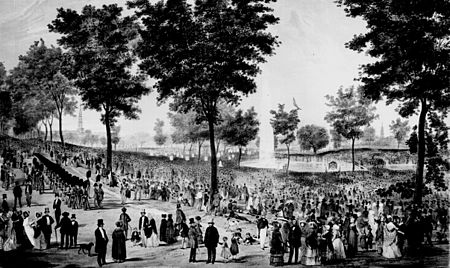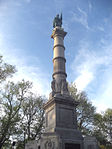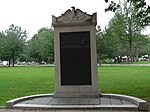Greater Boston is the metropolitan region of New England encompassing the municipality of Boston (the capital of the U.S. state of Massachusetts and the most populous city in New England) and its surrounding areas. The region forms the northern arc of the Northeast megalopolis, so Greater Boston means both a metropolitan statistical area (MSA) and a combined statistical area (CSA), which is broader. The MSA consists of most of the eastern third of Massachusetts, excluding the South Coast and Cape Cod; the CSA additionally includes the municipalities of Providence (capital of Rhode Island), Manchester (the largest city in the U.S. state of New Hampshire), Worcester (the second largest city in Massachusetts and in New England), the South Coast region, and Cape Cod. While the city of Boston covers 48.4 square miles (125 km2) and has 675,647 residents as of the 2020 census, the urbanization has extended well into surrounding areas and the CSA has a more than 8.4 million people, making it one of the most populous such regions in the U.S. The CSA is one of two in Massachusetts, the other being Greater Springfield. Greater Boston is the only CSA in New England that lies in three states (Massachusetts, New Hampshire, and Rhode Island); some definitions extend it into a fourth (Connecticut).
Some of Greater Boston's most well-known contributions involve the region's higher education and medical institutions. Greater Boston has been influential upon American history and industry. The region and the state of Massachusetts are global leaders in biotechnology, engineering, higher education, finance, and maritime trade.As of 2020, 64% of Massachusetts' population lives in the Greater Boston metropolitan region, and 88% of Massachusetts' population lives in the Boston Combined Statistical Area. Greater Boston is ranked tenth in population among US metropolitan statistical areas, home to 4,941,632 people as of the 2020 United States Census, and sixth among combined statistical areas, with a population of 8,466,186. The area has hosted many people and sites significant to American culture and history, particularly American literature, politics, and the American Revolution.
Plymouth was the site of the first colony in New England, founded in 1620 by the Pilgrims, passengers of the Mayflower. In 1692, the town of Salem and surrounding areas experienced one of America's most infamous cases of mass hysteria, the Salem witch trials. In the late 18th century, Boston became known as the "Cradle of Liberty" for the agitation there that led to the American Revolution.
The Greater Boston region has played a powerful scientific, commercial, and cultural role in the history of the United States. Before the American Civil War, the region was a center for the abolitionist, temperance, and transcendentalist movements. In 2004, Massachusetts became the first U.S. state to legally recognize same-sex marriage as a result of the decision of the Massachusetts Supreme Judicial Court in Boston. Many prominent American political dynasties have hailed from the Boston region, including the Adams and Kennedy families.
Harvard University in Cambridge is the oldest institution of higher learning in the United States, with the largest financial endowment of any university, and whose Law School has spawned a contemporaneous majority of United States Supreme Court Justices. Kendall Square in Cambridge has been called "the most innovative square mile on the planet", in reference to the high concentration of entrepreneurial start-ups and quality of innovation which have emerged in the vicinity of the square since 2010. Both Harvard University and the Massachusetts Institute of Technology, also in Cambridge, have been ranked among the most highly regarded academic institutions in the world.










